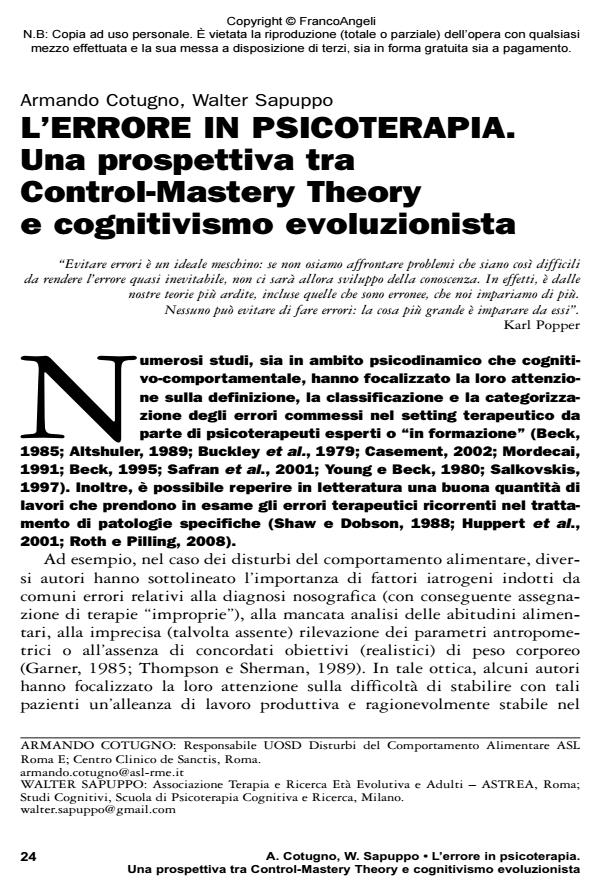L’errore in psicoterapia. Una prospettiva tra Control-Mastery theory e cognitivismo evoluzionista
Titolo Rivista PSICOBIETTIVO
Autori/Curatori Armando Cotugno, Walter Sapuppo
Anno di pubblicazione 2014 Fascicolo 2014/1
Lingua Italiano Numero pagine 15 P. 24-38 Dimensione file 557 KB
DOI 10.3280/PSOB2014-001003
Il DOI è il codice a barre della proprietà intellettuale: per saperne di più
clicca qui
Qui sotto puoi vedere in anteprima la prima pagina di questo articolo.
Se questo articolo ti interessa, lo puoi acquistare (e scaricare in formato pdf) seguendo le facili indicazioni per acquistare il download credit. Acquista Download Credits per scaricare questo Articolo in formato PDF

FrancoAngeli è membro della Publishers International Linking Association, Inc (PILA)associazione indipendente e non profit per facilitare (attraverso i servizi tecnologici implementati da CrossRef.org) l’accesso degli studiosi ai contenuti digitali nelle pubblicazioni professionali e scientifiche
Sia in ambito psicodinamico che cognitivo-comportamentale, il concetto di errore terapeutico rappresenta un argomento controverso e di cruciale importanza. Nel concepire l’errore come un evento che colpisce in modo negativo il paziente (direttamente o indirettamente) attraverso la compromissione del corso o della qualità della terapia stessa, gli autori prendono in esame differenti studi presenti in letteratura che testimoniano l’attenzione dedicata alla classificazione degli errori, ai fattori iatrogeni derivati da distorsioni o carenze di tecnica terapeutica e la conseguente necessità di condividere criteri di azione sistematici ed empiricamente derivati con cui valutare le competenze specialistiche, l’attitudine al trattamento nonché le caratteristiche personologiche del terapeuta. La cornice teorica descritta, con l’ausilio di esemplificazioni cliniche, è quella cognitivo-evoluzionista e della Control-Mastery Theory.
Parole chiave:Errore; psicoterapia; cognitivo evoluzionista; Control- Mastery Theory; alleanza terapeutica.
Armando Cotugno, Walter Sapuppo, L’errore in psicoterapia. Una prospettiva tra Control-Mastery theory e cognitivismo evoluzionista in "PSICOBIETTIVO" 1/2014, pp 24-38, DOI: 10.3280/PSOB2014-001003